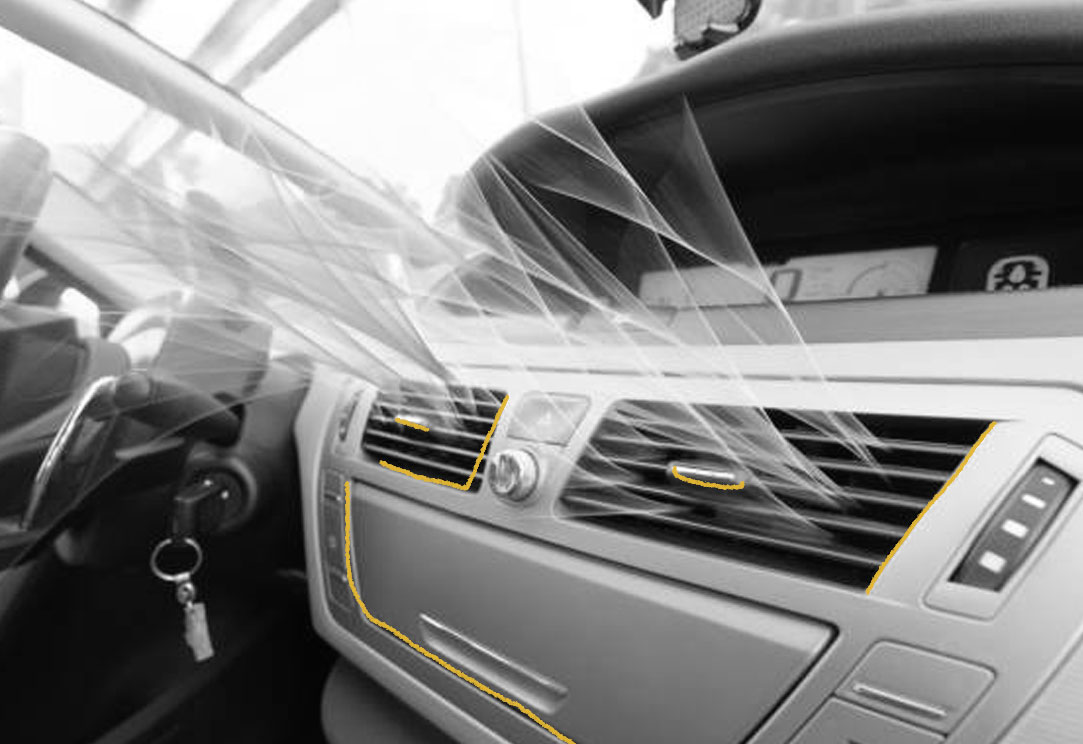The earliest cars were open to the air, so keeping out the cold was more of a concern than hot weather was, but closed-body vehicles were soon released. Windows were often rolled down and vents under the dashboard circulated air to help keep drivers cool, but these ventilation systems were inefficient and didn’t keep dirt, dust, pollen, or insects out of the car. Sometimes small electric fans, such as the Knapp Limo-Sedan Fan, were mounted on the interior of the car to help circulate the air. The first device capable of lowering a car cabin’s temperature was called the Thermador Car Cooler. It was attached to the roof of a car and used water evaporation to deliver cool air through an open window. According to a Popular Mechanics article published at the time, it was capable of lowering the “inside temperature of the car as much as 15 to 20 degrees.” Around the early 1940s, Packard became the first automaker to offer factory-installed car air conditioning; Cadillac followed suit in its 1941 models. However, these early car air conditioning units were inconveniently located in the trunk — the driver would have to get out of the car and manually install or remove the drive belt from the compressor to turn the air conditioning on and off. The system also only circulated air already in the cabin; it couldn’t incorporate outside air, which proved especially problematic when someone in the car was smoking. Even worse, the condensed water running overhead often dripped onto passengers and the units had no temperature control settings. During World War II, car manufacturing took a back seat to the war effort, but in 1953, General Motors, Chrysler, and Packard all introduced new air conditioning systems. Just three years after that, every major American carmaker offered air conditioning as an option in their vehicles. Improvements continued as the technology became more popular. In 1953, General Motor’s Harrison Radiator Division devised a revolutionary car air conditioning system that fit into the engine compartment. Roughly a decade later, Cadillac invented comfort controls that allowed the driver to set the temperature (the system worked by channeling some of the cold air to the heater core and mixing hot and cold air to keep the temperature steady). By the end of the 1960s, over half of all new cars had air conditioning units. Today, car air conditioning is standard in nearly every vehicle on the market and has come a long way since its inception, with once-unimaginable offerings like dual and rear climate control now included in most cars.

Your go-to guide for weird history facts
Subscribe to the FREE daily email that makes learning about history fun.


